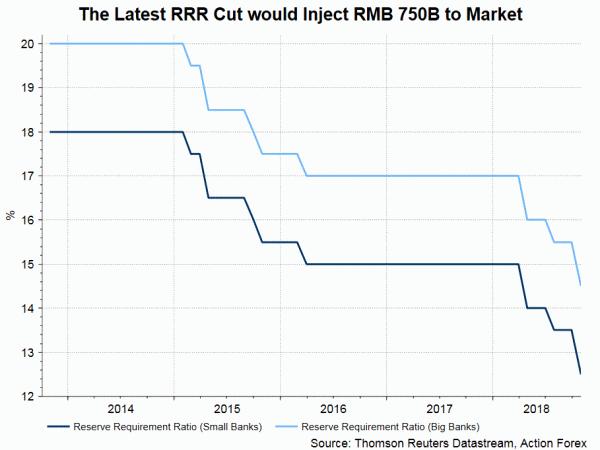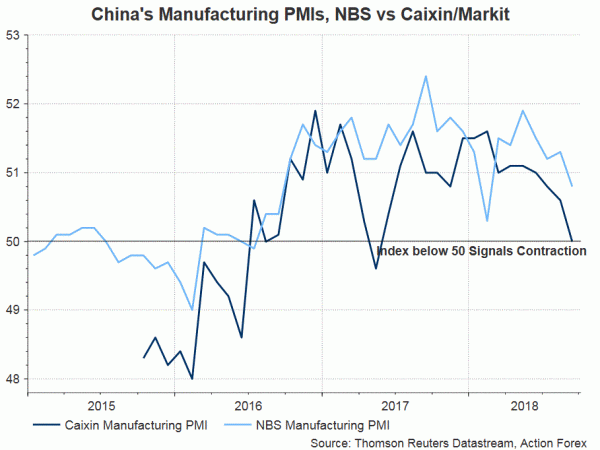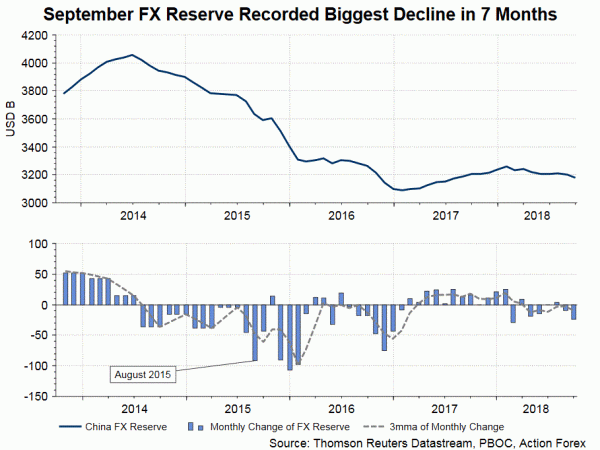China announced to cut RRR by 100 bps, effective October 15 and applicable to all types of banks, including large commercial banks, joint-stock banks, city commercial banks, non-county rural commercial banks, and foreign banks whose current RRR stand at 15.5% (large banks) or 13.5% (small to medium banks). The move would release a total of RMB 1.2 trillion in liquidity, of which 450B is for offsetting maturing Medium-Term Lending Facility (MLF) loans and the rest (RMB 750B) injected into the banking system. PBOC reinforced that it would maintain the “prudent and neutral” monetary policy, and keep the renminbi (Chinese yuan) movement stable.
We have suggested that PBOC has tilted to the easing side, focusing on boosting domestic growth, and we have anticipated further RRR reduction in 4Q18. The announcement was surprising in the sense that the size of reduction, at 100 bps, was bigger than expected. Meanwhile, the timing of the announcement – just before the re-opening of China’s stock markets after golden week holiday- signals the intention to prevent equities from sharp selloff, after US’ escalation of trade war and release of weak September PMIs.
Growth Risk is to the Downside
The government’s official manufacturing PMI dropped to 50.8 in September from 51.3 in August. Trade-related sub-indices fell markedly, while production and employment sub-indices also weakened. The “new export orders” sub-index fell -1.4 points to 48 while the “import” sub-index eased further to 48.5 from August’s 49.1. Both readings have stayed below 50 (signalling contraction) for three months in a row, indicating the negative impacts on trade after US’ first tariff imposed on July 6. “New orders index slipped -0.2 point to 52 and “production” sub- index dropped -0.3 points to 53. Focusing on SMEs, the final reading of Caixin/ Markit manufacturing PMI slipped -0.6 point to a 16-month low of 50 in September. This suggested that the country’s manufacturing activities are barely expanding.
Key September macroeconomic data due in coming weeks should point to further weakness. IP growth is expected to return to recent low level of 6% y/y, following a brief recovery to +6.1% in August. Retail sales might have expanded 9% y/y, steadying. Growth in urban FAI probably stayed at the weakest level at 5.3% in the first 9 months of the year. Disappointing third quarter data affirm the expectations that GDP growth would slow from the 1H18. Indeed, the slowdown might come in deeper than previously projected.
Decline in FX Reserve Signals Intervention
While not a perfect comparison, given the closeness of China’s bond market, China-US 10-year treasury yield spread has narrowed to the level not seen since 2011. It would narrow further as China continues to loosen its monetary policy, while the Fed is on track to raise rates gradually. Indeed, the decline in yield spread has accelerated since October. Interestingly, renminbi has only weakened modestly during the period.
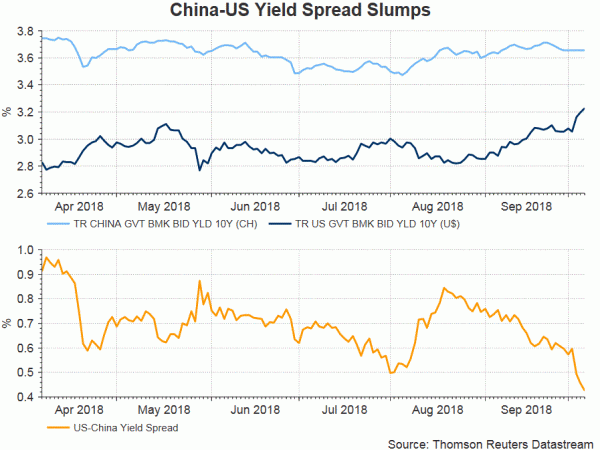
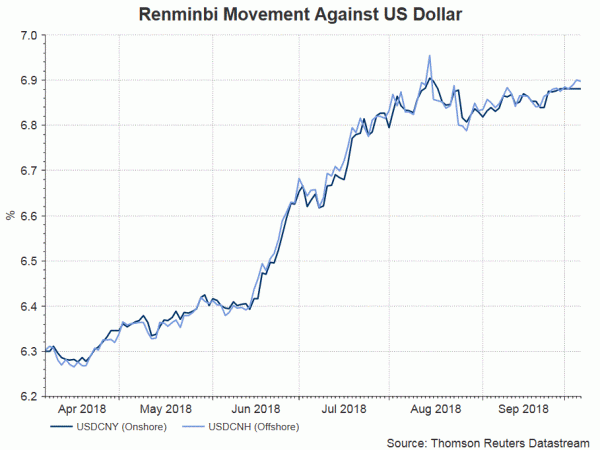 Despite ongoing claims of renminbi internationalization, the Chinese government has never eased its grip on exchange rate. China’s FX reserves fell USD 22.69B to USD 3087B in September. The decline not only exceeded consensus of a -USD 5 B fall but also marks the biggest fall since February. Valuation effect only contributed about USD 1.88B out of the USD 22.69B decline (about 8.29%) in FX reserve. This suggests that the government intervened the FX market, by selling foreign assets, to defend the value of renminbi. Some have been suggesting that China is depreciating its currency through accommodative monetary policy. The FX reserve data suggest that the government, while adopting accommodative measures to boost growth, is concerned about excess renminbi depreciation which would exacerbate capital outflow.
Despite ongoing claims of renminbi internationalization, the Chinese government has never eased its grip on exchange rate. China’s FX reserves fell USD 22.69B to USD 3087B in September. The decline not only exceeded consensus of a -USD 5 B fall but also marks the biggest fall since February. Valuation effect only contributed about USD 1.88B out of the USD 22.69B decline (about 8.29%) in FX reserve. This suggests that the government intervened the FX market, by selling foreign assets, to defend the value of renminbi. Some have been suggesting that China is depreciating its currency through accommodative monetary policy. The FX reserve data suggest that the government, while adopting accommodative measures to boost growth, is concerned about excess renminbi depreciation which would exacerbate capital outflow.




